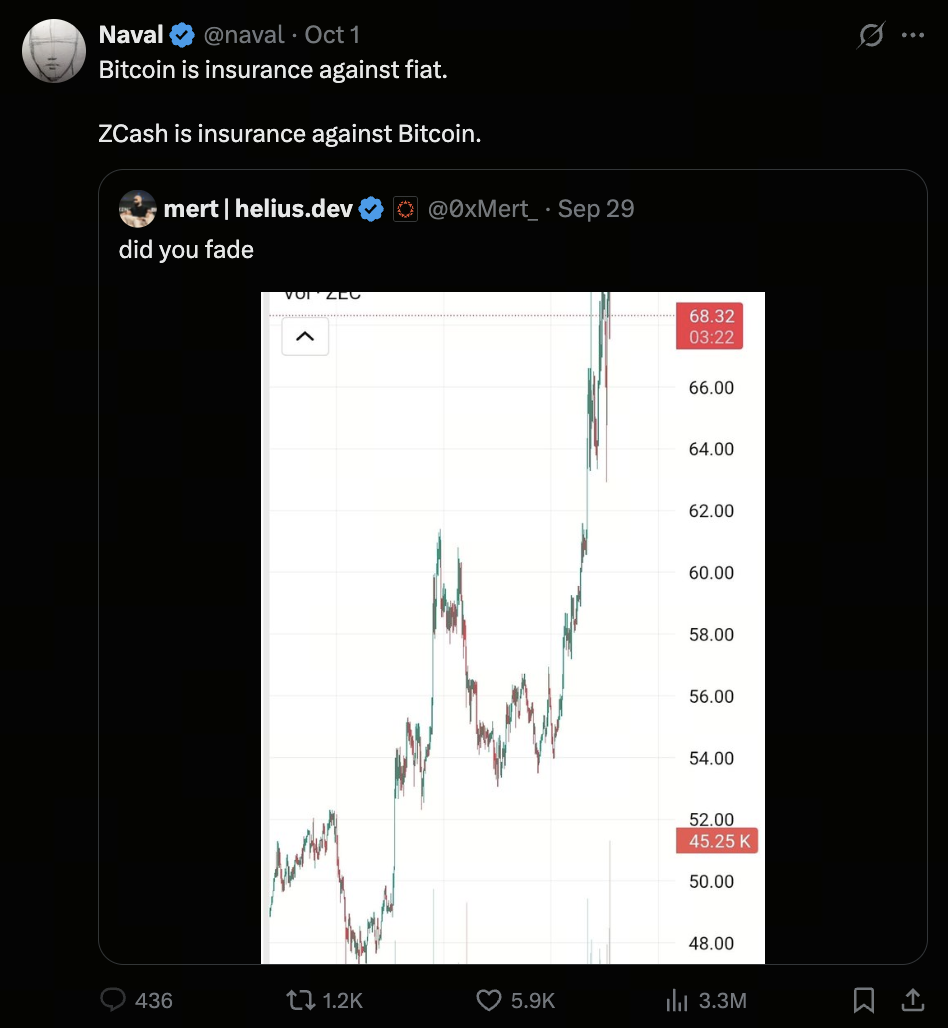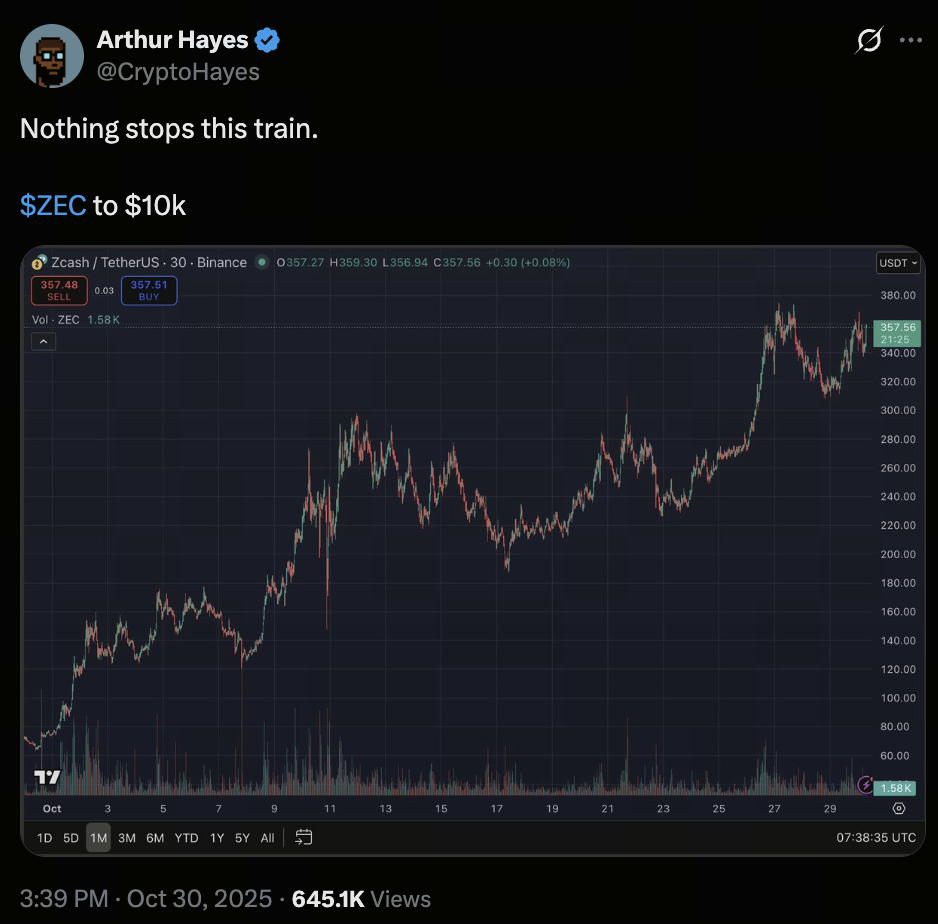ZEC Breaks $440: The Privacy Coin Comeback and zk Revolution
Preface
Over the past few years, the rise of FATF standards, exchange KYC requirements, and on-chain monitoring tools nearly rendered privacy coins obsolete. Yet, in October 2025, an unexpected surge reignited a long-dormant narrative—Zcash (ZEC) skyrocketed to $440, becoming one of the most controversial and symbolic crypto assets in recent memory.
Privacy Coin Revival
Zcash’s dramatic rally was sparked by a single tweet. In early October, Silicon Valley investor Naval Ravikant declared on X, “Zcash is insurance against Bitcoin.” The community quickly amplified the message, prompting a wave of capital inflows. Soon after, BitMEX co-founder Arthur Hayes boldly predicted, “This train cannot be stopped.”

(Source: naval)
While Hayes made the dramatic forecast that ZEC could reach $10,000, the real takeaway is the renewed focus on privacy as a mainstream market narrative. In an era where every transaction is on-chain and wallet activity is highly visible, invoking “insurance” serves as a reflection on crypto’s ethos in a regulated world.

(Source: CryptoHayes)
The Zcash Model
Zcash leverages zero-knowledge proofs (zk-SNARKs) to build a ledger structured around Selective Transparency. This structure offers two major innovations directly related to Selective Transparency:
- Complete privacy protection—transaction amounts, addresses, and identities are fully encrypted;
- Optional disclosure—users can selectively share information with regulators or auditors as needed.
This verifiable yet untraceable framework allows Zcash to balance technological freedom with compliance potential. Rather than evading regulation, it offers a new structural solution, enabling a privacy layer to coexist within a public blockchain.
Reimagining ZK Valuation Logic
ZEC’s strong performance reflects the market’s revaluation of zero-knowledge proof technology. Historically, ZK was mainly considered a Layer 2 scaling tool, but now its value proposition is shifting from efficiency toward individual rights.
In an on-chain society where data is an asset and identity is traceable, “verifiable privacy” has become a scarce resource. Zcash’s zk-SNARKs architecture enables this scarcity to be quantified and traded. It is more than a privacy protocol; it is a philosophical framework for on-chain autonomy.
Scarcity Economics of Halving
Alongside the reappraisal of its technological value, ZEC’s fundamentals have reached a supply inflection point. Since the previous block reward halving, Zcash’s circulating supply has notably declined. When market narratives and demand rise together, scarcity naturally amplifies price. This dynamic mirrors Bitcoin’s early halving cycles: narrative drives perception, which fuels demand, and demand pushes price. Through this cycle, ZEC has not only returned to market prominence but has also been redefined as the asset embodiment of privacy rights.
The Future of Privacy
Zcash’s ascent is a reminder that privacy has not disappeared; it has been suppressed under transparent consensus. As ZK technology matures, it is paving the way for privacy to return to the mainstream, not as a challenge to regulation, but as a compliant technological intermediary rebuilding trust.
For more Web3 insights, click to register: https://www.gate.com/
Conclusion
As ZK-rollups, privacy-focused Layer 2 solutions, and fiat stablecoins converge, we may be at the dawn of zero-knowledge finance. This ZEC rally signals more than just market movement—it marks the next chapter for Web3, where the focus shifts from DeFi yield to data freedom.
Related Articles

Pi Coin Transaction Guide: How to Transfer to Gate.io

Flare Crypto Explained: What Is Flare Network and Why It Matters in 2025

How to Use a Crypto Whale Tracker: Top Tool Recommendation for 2025 to Follow Whale Moves

What is N2: An AI-Driven Layer 2 Solution

Understand Baby doge coin in one article
